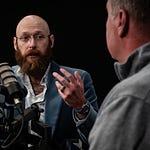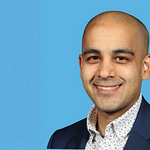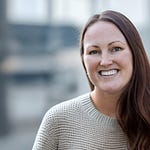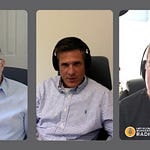You: Every day?
Me: Yes. Every day.
And it just keeps getting better. But first, let’s go back a bit.
Cole Yancey was unsatisfied being a bench scientist. So much so, he asked the freezer repair guy about how to get out of the lab. “Maybe I can come do what you’re doing.” The freezer guy was not helpful. It reminds me of a scene from Top Gun.
1st Lesson in Networking
Cole started chatting up sales reps who came by the lab. One took him under his wing and soon Cole was having lots of conversations with his new network and eventually found himself as an application specialist at Hamilton Robotics. It’s the perfect role to transition from the bench to sales.
Eventually, he gets a job in sales “with his back against the wall” trying to generate some interest in what he’s doing. Looking on LinkedIn, he noticed there are a lot of salespeople teaching others about sales. He also saw a gap. No one was talking to scientists about robots and what they could do for them. What was a business necessity became a great creative outlet as well.
He started out by writing down all his ideas and all the questions people had about laboratory robots. Then he would spend some time every week to map out his plan for the next week or two. Those two activities make it easier to sustain the process. He was learning by jumping in and doing it - both in terms of sales and creating content to generate interest.
Like these podcasts? There are more life science stories coming every week.
Setting Internal Goals Pays Off
Because LinkedIn is global and his sales territory is not, some of the leads he generated were passed to his colleagues. That’s good for the company but can (understandably) be demoralizing when you are trying to hit a number. At that point, he shifted to more of a 50/50 company/personal approach. That turned out to be a good move. After a recent layoff, he had calls within hours from interested companies.
It's incredible, the power of networking and the power of having some sort of… and I really am like reluctant to use this, but like to have some sort of brand on LinkedIn, like personal brand. It's incredibly powerful. And just to kind of give you an idea, I was laid off in December and, you know, my current role…. Basically, they reached out like hours after I got laid off. I hadn't told anyone. Through the grapevine someone had reached out to them and let them know, and they reached out to me and said, “Hey, we'd love to, to chat and kind of, you know, this is what we're doing. Let's talk.” And that's where I am. Right. That's, that's it was, it was a quick layoff and it was, it was incredible to see like the outpouring of the community come out and support me. You know, people that you don't think are watching are watching, so they see… they never interact and then all of a sudden, they're in your DMs like saying, “Hey, love what you're doing on LinkedIn.”
Advice for Companies
Cole is a big believer in having a growth mindset. Clearly, he has one himself, but companies can too. How do you think bigger and work toward the future? You should want to get as many eyeballs on your company (not just your company page but the people that make up your company) as possible. Not only is it good for demand generation when people ask about your business, it’s great employer branding when potential recruits see smart, happy employees posting regularly.
Beyond that, it’s outsourcing some learning and development. Cole is learning by putting stuff out every day while serving customers at the same time.
Schedule a 15-minute chat with Chris about turning conversations into content for your life science company.











